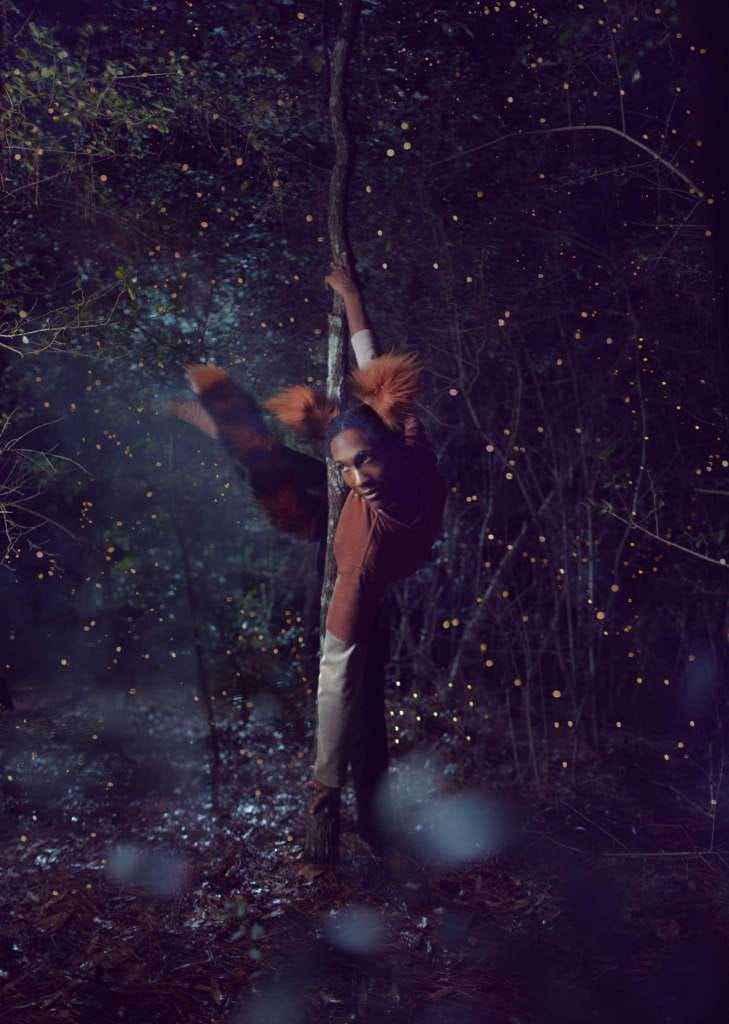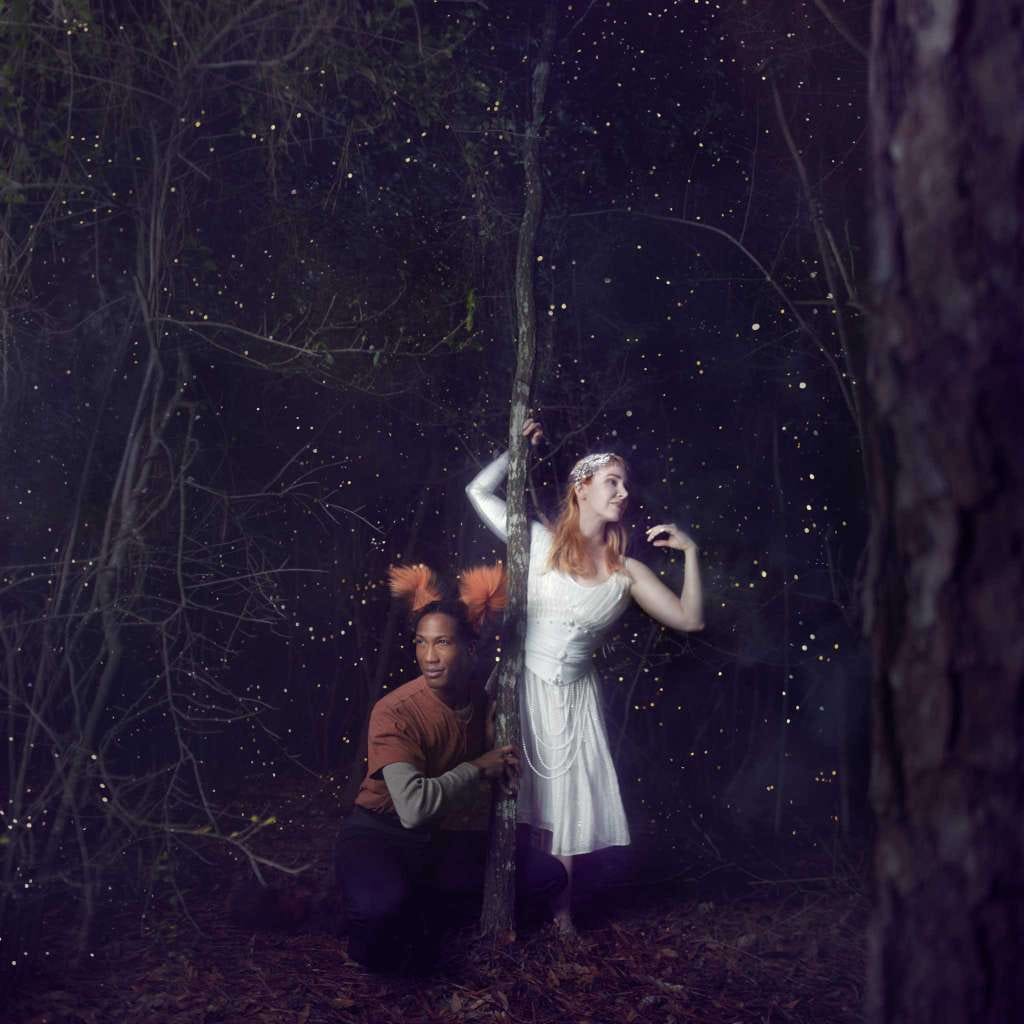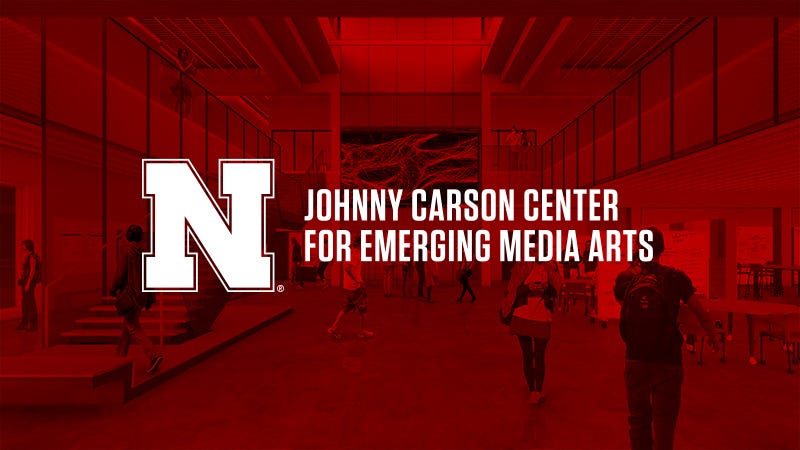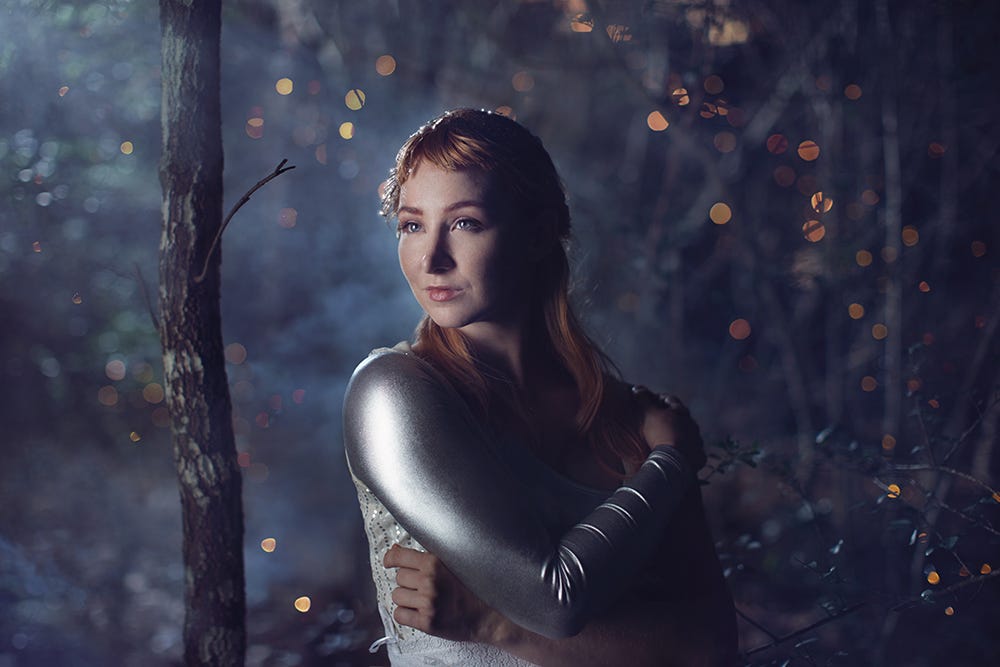
We interview artistic director Jodie Brooke about the experience currently running at the Glade Arts Foundation in Houston
Jodie Brooke is an artistic director from London, UK who currently works out of Houston, Texas. She is currently working on a family-friendly, magic-filled immersive show The Enchanted Forest at Glade Arts Foundation; the production includes light, dance, and acrobatic, as well as both indoor and outdoor elements as participants interact with different woodland characters in a built installation.
We interviewed Jodie about the holiday experience over email.
No Proscenium (NP): Could you tell us a little about yourself and your background in the immersive arts?
Jodie Brooke (JB): I grew up near London, UK and was fortunate to have parents who took me and my sister to theatres and museums almost every week. I’ve been making theatre for traditional and non-traditional spaces for over 20 years, and particularly enjoy creating theatrical installations for unusual or found spaces. I experimented with making my own shows through my teens, and that was when I first studied Jim Cartwright’s work Road and started to understand different performance modalities and staging approaches.
At the University of Leeds, UK and while living in Lisbon, Portugal, I made more of my own work in a variety of locations including abandoned basements and multi-level parking lots. During that time I experienced Punchdrunk’s Marat/Sade at The Big Chill Festival. I continued to experiment with different performance spaces and ways of engaging audiences, and exploring the balance points within that.
After moving to the USA in 2013, I focused on developing immersive work that incorporates circus arts, particularly street performance, burlesque and aerial acrobatics. The ways in which we use and define space and how it affects the movement and interaction of performers and the audience through that space is something that really fascinates me and drives a lot of my work forward.

NP: What, in a nutshell, is this project about?
JB: The Enchanted Forest is a multi-space, indoor-outdoor, interactive performance installation that invites audiences of all ages to slow down and experience a magical night-time forest world together.
NP: How did the The Enchanted Forest come about? What inspired this work?
JB: Glade Arts Foundation opened in April this year, and during the summer I was talking with a dear friend about the types of theatre work I have been wanting to bring to this area, after two years of focusing my energies directing in downtown Houston. While I was describing an initial concept for this project to her she said she had to connect me with the team at Glade. I met with them and we talked about making a performance experience running from November to January to celebrate their first holiday season. Glade Arts Foundation was founded to make fine arts accessible to the whole community, so we talked a lot about what exactly that means, and how important it is to create a space that is not divided into experiences for different ages, but that offers an experience for all ages to enjoy together.
When I was around 6, my mother took me and my sister to see an outdoor production of Alice in Wonderland, during which we had to navigate our way around the countryside, and we could see some of the workings of the show. Suddenly, the Cheshire Cat literally leapt down from a tree and interacted with us directly. I absolutely loved it, and that feeling of seeing the performer behind the character and of seeing the bones of theatre production has influenced a lot of what I make.
With The Enchanted Forest, part of my intention is to offer our audiences that feeling of playfulness, wonder, and excitement combined with a realization of the theatricality at play.
NP: How is the audience incorporated into the show?
JB: The audience experience starts outside the gallery building as they check in, in small groups, and walk through a sound and light installation that leads to the inside of the building. In designing the project, we wanted to reference the history of the building and the fact that for most of the year it is a gallery space providing a home for paintings, sculptures, and musical performances.
This first part of the installation is designed to evoke a sense of nostalgia that gives way to a magical and surreal forest installation inside the gallery that includes very large real oak and sycamore trees, floating clouds, giant bubbles, and a nest structure containing a separate sound installation for audiences to discover. This area comes to life as the audience arrives, and once they have had time to explore, performers begin to appear in the space, eventually inviting small groups of audience to follow them into the outdoor forest installation.
Get Kathryn Yu’s stories in your inbox
Join Medium for free to get updates from this writer.
SubscribeSubscribe
Once outside, the forest lights up and different sounds and performers appear as the audience moves through the space. The audience is key to this part: if the audience doesn’t move forward, the space in front of them stays darker and quieter; if they move quickly or slowly, it also affects how much of the sound and light installation they will discover. So the audience’s willingness to keep exploring without rushing is what drives the performances forward.
As the audience follow performers through the outside space, they encounter vignettes of dance and aerial acrobatic performances out in the fresh air among the trees, and interact directly with a guide character who gives individual audience members responsibility for items such as a small balloon, chocolate coins, and, eventually, star-shaped ornaments made of ribbon and cardstock, which they use later on once they are back inside the gallery.
On returning to the gallery interior, the audience discover across a previously hidden space that contains giant wishing tree sculptures made of steel and wood which they can walk around and underneath. They write their wishes for the year ahead on the ornaments they were given in the forest and tie these to the trees. As the show run continues these trees are filling up with hundreds of wishes from audiences of all ages.

NP: How do you design an immersive experience that’s enjoyable for both kids and adults?
JB: By working with an incredibly talented and experienced team of designers and theatremakers! I am thrilled to have been able to assemble such a wonderful creative and production team for this project.
During the creative process, we talked a lot about how to design the experience for kids and adults, and what we discovered is that the key with this project was to engage the imagination of the children in our audiences but also to engage the childhood memories and imaginations of the adults in our audiences. This is where the nostalgic elements in the sound and lighting designs really come into play. Since opening night, we have found that audience groups including children behave and respond differently to all-adult groups.
NP: How have audiences reacted so far?
JB: Very well, a lot of responses have included people saying that they feel more peaceful and like there is a space here to not be bombarded with all the noise of the holiday season, and that they enjoy the time spent with their loved ones. A few people have already been more than once and have noticed different aspects of the installation each time. There hasn’t been a performance installation like this in this area before, so it’s also a new and unique experience for many of our audience.
NP: What’s surprised you so far during the process?
JB: I absolutely love watching the wish tree sculptures come to life as they collect all the wishes of our audiences. The interesting thing is that a lot of people wish for the same sorts of things — universal concepts such as love, security, time with their families, health and happiness. Seeing audiences realize how similar so many of us are is very touching to watch. And of course it’s adorable to read the children’s wishes, which are often the same as adult wishes, with the occasional wish for Pokémon as well!
NP: What do you hope folks take away from the experience?
JB: When we first started work on this project and I was telling people about it, I found that a lot of people, particularly older people, would start to tell me about a memory they had of doing something with their parents or grandparents during the winter. Sometimes it would be that they had been to see a play together, or a concert or exhibition, but often it would be something very simple like listening to old records at their grandparents’ home or going for a walk and kicking their feet through leaves.
I realized that that’s what this project is; I want the experience we have created of being surprised and delighted by something magical in the forest to be something that the families in our audiences remember as a special and peaceful time spent together exploring.
The Enchanted Forest runs through January 6. Tickets are $35.
No Proscenium is a labor of love made possible by our generous Patreon backers: join them today!
Brought to you in part by The Johnny Carson Center for Emerging Media Arts, who are seeking faculty candidates.

In addition to the No Proscenium web site, our podcast, and our newsletters, you can find NoPro on Twitter, Facebook, YouTube, Instagram, in our Facebook community Everything Immersive, and on our Slack forum.




















Discussion